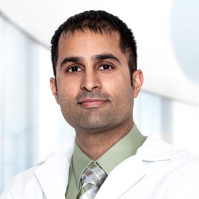ACC.19 SHD Imaging Highlights

On the heels of the incredible results of the PARTNER 3 trial presented at ACC.19, there has never been a more pertinent time to highlight structural heart disease (SHD) imaging. SHD imaging – with a focus on two- and three-dimensional echocardiography and cardiac computed tomography (CCT) – has become a crucial component of driving the field forward. Without it, TAVR, percutaneous mitral valve repair and other emerging procedures would not be possible.
The ACC Imaging Section meeting at ACC.19 was especially productive, as important issues such as lack of funding for advanced multimodality and SHD imaging fellowship positions were discussed. With the expansion of TAVR to all risk categories and the recent FDA approval of Mitraclip for functional mitral regurgitation, it is important to preempt the expected shortfall in well-trained SHD imagers. SHD imaging recognition and reimbursement concordant with time spent were additional important issues discussed. These issues are expected to be a top priority for the ACC Imaging Council.
The first SHD imaging session of the meeting – moderated by international co-chairs Victoria Delgado, MD, and Aloha Meave, MD (@CardioimagenINC) – expertly set the stage for the subsequent SHD imaging sessions. This session, "Cardiac CT for Diagnosing and Guiding Treatment in Structural Heart Disease," covered the increasing role of post-TAVR CCT for hypoattenuated leaflet thickening and CCT assessment of the novel "skirt neo-LVOT" concept for pre-transcatheter mitral valve replacement planning.
An exciting imaging session entitled "Transcatheter Mitral and Tricuspid Valve Interventions: Imaging Determines Success" co-chaired by SHD imaging luminaries, Rebecca T. Hahn, MD, FACC (@hahn_rt), and Paul A. Grayburn, MD, FACC, highlighted the role of the interventional echocardiographer as the co-primary operator in these transcatheter procedures. It also included a heated debate between Azeem Latib, MBBCh, FACC (@azeemlatib), and Steven F. Bolling, MD, FACC, on the merits of surgical tricuspid annuloplasty, where Bolling urged the audience to "put a ring on it."
A session on TAVR imaging, "Next-level Knowledge in TAVR Through Multidisciplinary Collaboration" was aptly titled. Co-chairs Scott M. Lilly, MD, PhD, FACC (@ScottLillyMDPhD) – an academic SHD interventional cardiologist – and Omar K. Khalique, MD, FACC (@OKhaliqueMD) – an academic SHD imaging cardiologist – were joined by a diverse panel of community advanced imaging cardiologist including Ryan P. Daly, MD, FACC (@DrRyanPDaly), Michael Querijero, PA-C, and Noel Harrington, MSN. The session covered novel concepts in TAVR imaging, including sizing techniques for bicuspid aortic valves, commissural alignment and post-TAVR coronary access. In the setting of the new paradigms in TAVR imaging presented in the session, the insights of the multidisciplinary heart care team panelists grounded the discussion in patient care.
The final SHD imaging session of ACC.19, "Concepts and Controversies in Interventional Echo," did not disappoint. Innovators Stephen H. Little, MD, FACC (@SLittleMD), and Randolph P. Martin, MD, FACC, presented new technological advancements in 3D-printing and artificial intelligence, which hold great promise to improve patient care. An important issue of cross-vendor incompatibility of TEE-fluoroscopic co-registration was raised as a significant issue to discuss with industry partners in order to expand the technology for improvements in patient care.
During the annual Convocation ceremony at the close of ACC, the theme of SHD came full circle. In a touching ceremony, Martin B. Leon, MD, FACC (@MartyMLeon), interventional cardiologist and presenter of the PARTNER 3 trial results, received the ACC Lifetime Achievement Award. The video tribute by his primary nominator, Michael J. Mack, MD, FACC, highlighted the multidisciplinary and collaborative nature of the SHD field. Without trailblazers like Leon and Mack, who reached across the aisle with the primary goal of improvement in patient care, myself and so many others would not be part and parcel of the expanding field of SHD. This ceremony truly cemented the role of SHD in the future of medicine.
Clearly, multimodality cardiac imaging is a rapidly advancing field. In particular, SHD imaging is evolving not only in and of itself, but also in response to a multitude of new devices and techniques which are continuously being developed. The exciting developments in this field will continue for the foreseeable future. For those of us practicing SHD imaging, there is no better time than the present (except the future)!

This article was authored by Omar K. Khalique, MD, FACC, cardiologist at Columbia University Medical Center in New York.
